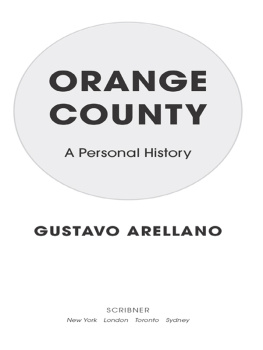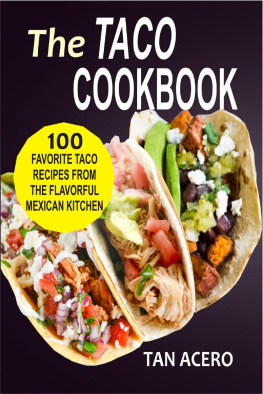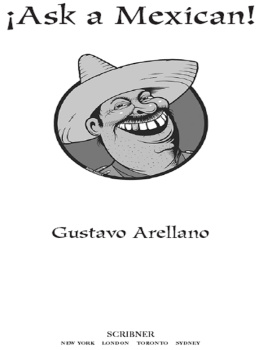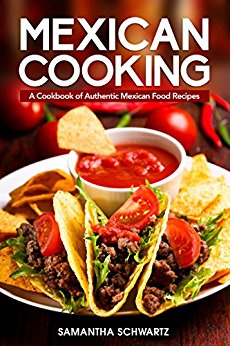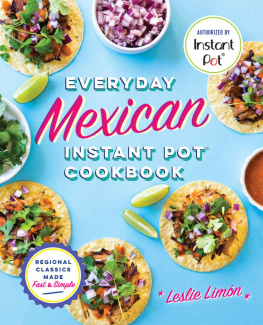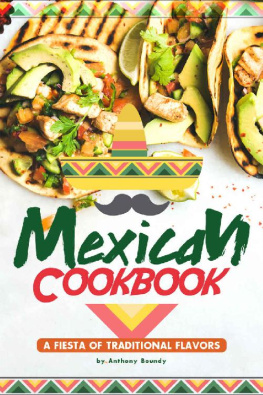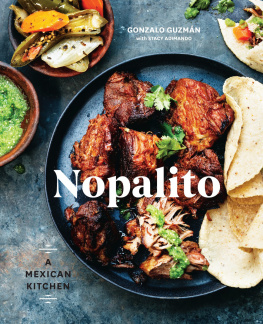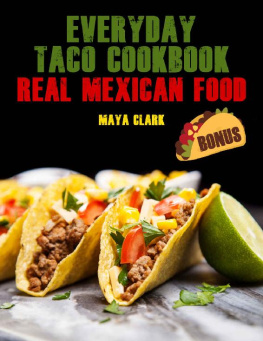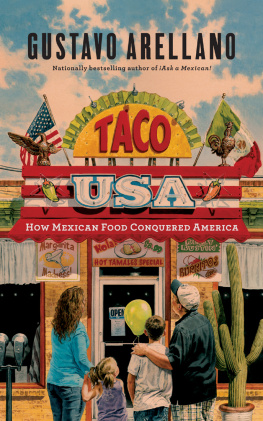

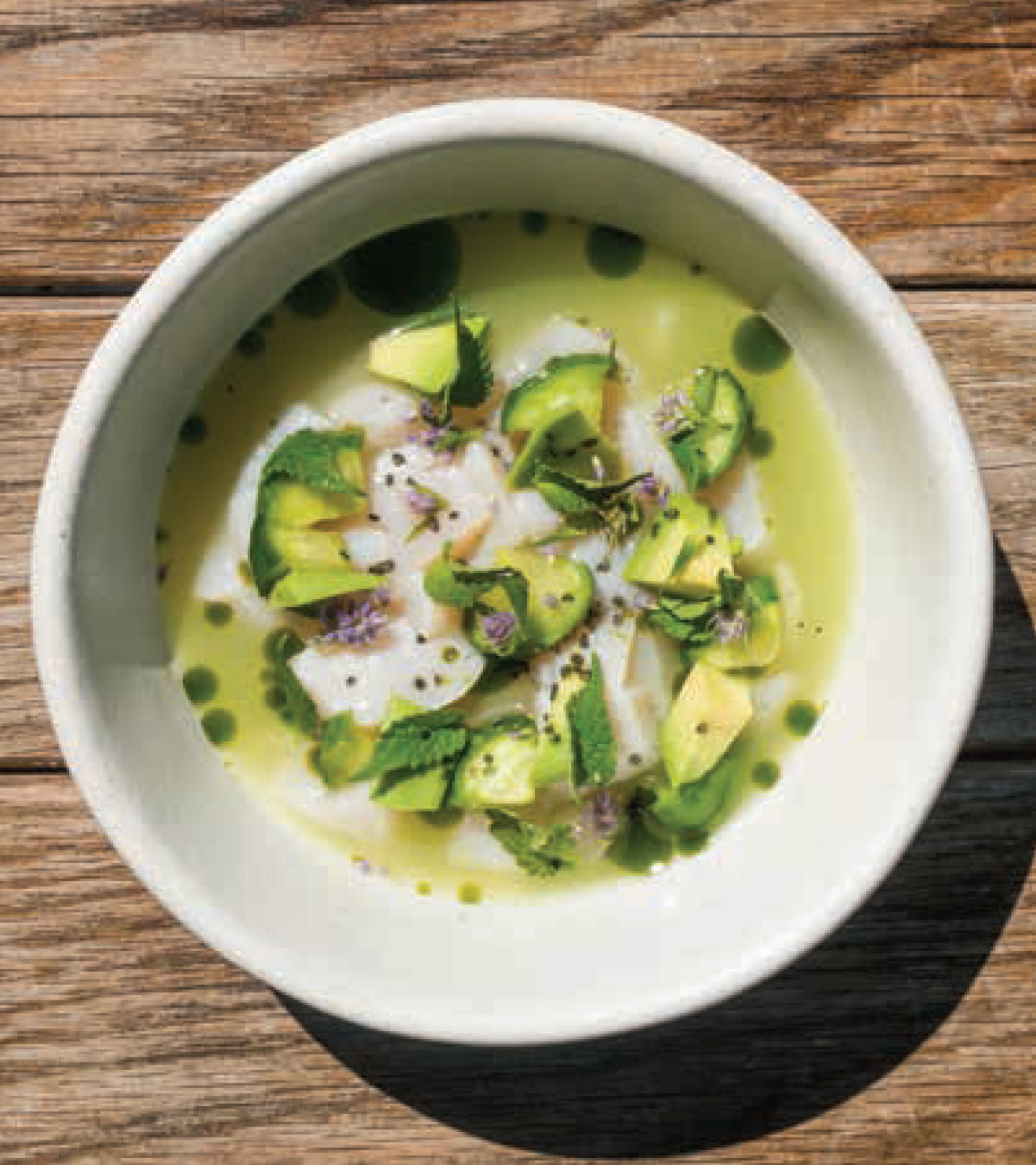

Copyright 2017 by Bill Esparza
Photographs 2017 by Staci Valentine
All rights reserved. No part of this book may be reproduced or transmitted in any form or by any means, electronic or mechanical, including photocopying, recording, or by any information storage and retrieval system, without permission in writing from the publisher.

Published by Prospect Park Books
2359 Lincoln Avenue
Altadena, California 91001
www.prospectparkbooks.com
Distributed by Consortium Books Sales & Distribution
www.cbsd.com
Library of Congress Cataloging in Publication Data is on file with the Library of Congress
The following is for reference only:
Esparza, Bill
L.A. Mexicano: Recipes, People & Places / by Bill Esparza 1st ed.
p. cm.
ISBN: 978-1-945551-01-7 (e-book)
1. Cooking, Mexican. 2. Cooking, California. 3. Cooking, Los Angeles, CA. I. Title.
Edited by Colleen Dunn Bates
Editorial team: Jenn Garbee, Pat Jalbert-Levine, Dorie Bailey, Elizabeth Ovieda, Anna Russell, Daphne Liu, and Emily Peters
Photography by Staci Valentine
Designed by Amy Inouye, Future Studio
First edition, first printing


CONTENTS


Table of Contents
Guide
The most precious memory I have of Bill Esparza is him lecturing me for a good half an hour about why Im wrong about my favorite meal of all time.
It was over cell phone, while I was trying to get somewhere with my wife, with me simultaneously wanting the conversation to end as fast as possible and yet being mesmerized by the knowledge Bill was dropping on me, like Yahweh telling Job to shut up and listen. The topic at hand was birria de res, a beef stew from the Mexican state of Zacatecas that still isnt readily available in the United States. Growing up, I only ate it at family parties, and ached for it all other times: stringy beef stewed in a spicy sauce made from chiles sourced only in Mexico, usually served alongside beans, rice, and corn tortillas but sometimes found in burritos. Spicy, savory, sweet: perfect. Birria de res is heritage, its culture, its deliciousand Bill was telling me it wasnt true birria.
But, Bill, I kept telling him. My mom calls it birria. My dad calls it birria. My grandparents called it birria. Everyone from my hometown calls it birria. And now youre telling us weve been wrong all these yearsand our birria de res is not actually birria?
Yes, Bill would respond, before launching into another detailed explanation of why he was right.
Coming from anyone else, Bills arguments would sound like the juvenile, arrogant blabbering of crazy Yelp kids or pretentious Instagrammers. But instead, I let him talk. He is Americas finest chronicler of Mexican food right now, the Livingstone of lengua, the Magellan of menudo, the Captain Cook of carnitas. He tracks down the most obscure Mexican regional dishes, whether in a tiny Mexican village or an alley in the middle of the San Fernando Valley, and lets the world know about it, bringing big, necessary business to mom-and-pop shops. And he does all of this with no formal journalism training and while playing sax across the world.
Screw Dos Equis: Bill is the Most Interesting Man in the World. So not only did I decide to shut up and take my birria de res lecture, I decided to write down everything that he was saying.

When I wrote my 2012 book, Taco USA: How Mexican Food Conquered America, I let audiences know that it was merely the first draft of what I hoped would be a blossoming of studies on the history of Mexican food in the United States. My book tells all the big storieshow Doritos were invented, the biographies of little-known pioneers, why more tequila is sold in the United States than in Mexico. It was important to document such history, much of which had never been chronicled before, but my bigger intention was to motivate people to find the local pioneers and tell their tales. Even if they didnt warrant a mention in a national release, their lifes work was worthy of being captured and celebrated.
Despite Los Angeles being the second-largest Mexican city in the world, the story of Mexican food in this metropolis has been criminally untold. Seriously: You can count on two hands all of the books ever published specifically on Mexican food in Los Angelesreally, one hand and a thumb. A new generation of scholars is starting to rectify this, but I know those books will mostly be academic gobbledygook that no one will read outside of a PDF or university library.
Thats why I was so thrilled when Bill told me about this book, and why Im honored to write the foreword. Bill is not some fancy paisa anthropologist; hes real. The pages here not only tell stories and recipes, but capture a moment in time before it disappears: an era in which the pioneers of a new style of Mexican food from the last couple of decades are still cooking while newcomers are already creating the next evolution of Mexican food. Far too much history has left us already, and L.A. Mexicano is arriving on the scene at the perfect time.
Bill is the only person who couldve written this book. No one has logged more miles in L.A. and Mexico to forge the relationships that have encouraged people to talk, and this book is a testament to that. If you need further proof, just visit the annual Tacolandia Festival in Olvera Street, the greatest food event in Southern California, if not the nation: 125-plus taqueros from Los Angeles to Monterrey to London (!) slinging the best stuff around.
As a professional food critic, Ive long witnessed the reluctance of immigrant restaurateurs to participate in anything mainstreamyet Bill gets them to overcome their doubts. Ive been with Bill in South Central L.A. tire shops, at Ensenada sea-urchin carts, in high-end Tijuana eateries, and the reaction by these men and women is always the same: Beel! Its chefs and cooks greeting their John the Apostle, the prophet who shares their gospel with the rest of the world.
Here, then, gentle reader, is your Bible. History, food, humorL.A. Mexicano will be the best read this year, and it joins City of Quartz and Southern California Country: An Island on the Land


